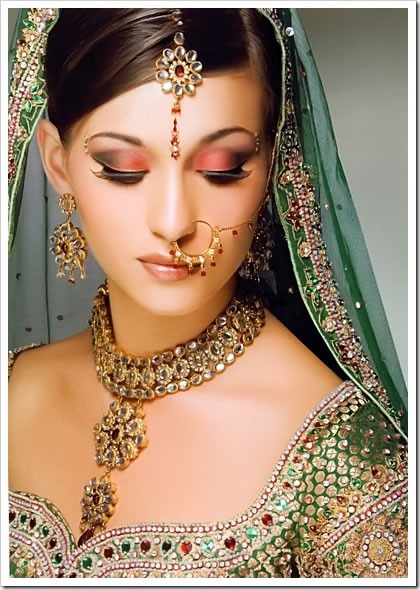
indian wedding dresses
He has proposed and you, of course, said yes. After all, helium is the love of your life. Even if it isn’t the traditional ordered marriage, you don’t have to avoid your dream wedding. It doesn’t mean that you can’t enjoy the beauty of a true Indian wedding. If you wish to make yourself the most beautiful Indian bride, you simply need to study the meaning and style of the traditional Indian wedding.
 The Sari
The SariTo be a proper Indian bride, you will want to choose the perfect sari. This Indian take on the dress has a very long history. Due to the fact that there are very few historical records in the country of India, not a lot is known about its exact origins. However, for as far back as people can trace, Indian women have been wearing long, unsewn, draped lengths of gorgeous cloth. For instance, drawings and sculptures that date back as far back as 100 B.C. depict women in the full-body drapes. It is thought that this design was slightly adapted as dance became a ritualistic part of Indian culture. As this occurred, it became necessary for the women to be capable to have free movement of their limbs. Yet, ne’er have the women of this nation let go of the concept that they mustiness preserve their modesty. The Muslims brought with them sewn clothing, which has been integrated into the modern day dress; however, for a long time the Hindus believed that this pierced cloth was impure. Now, though, women wear the Ghagra and the Choli under their saris, which are a shirt and petticoat. At the time of their introduction, women also began to wear slightly transparent saris. The current version of the sari often reveals the midsection, which is fitting with the sensed beauty of the nation, which is a small waist and large hips and chest. The bulkier fabric in the latter areas feeds into this perceptio

The Color
Many traditional Indian weddings feature a bride in red; however, in certain areas of the nation, greens, yellows, and whites ar worn instead. Each of these colors has a specific meaning, which is suitable in the wedding setting. So, if your family originates from India, you may consider exploring the habits of that particular area or region. Otherwise, choose the sari that best represents you or holds the most meaning for you on your wedding day
 While the latter is described more by the wearing of a traditional kimono, the first one is includes various alternatives, all of them belonging to the traditional style of an Indian bride .
While the latter is described more by the wearing of a traditional kimono, the first one is includes various alternatives, all of them belonging to the traditional style of an Indian bride .Indian wedding dresses in their design (the commonly met form is ‘saree’) are fully enriched by the diversity of Indian culture and tradition as every region is known to have its own dress code that is different in color and significance. For instance, the Northern areas, the Indian wedding dress is colored red or green to symbolize auspicious and lush. On the Southern side, the Indian wedding dress is colored in cream symbolizing purity and simplicity.

Beautiful Indian Wedding Dresses

Wedding dresses are most of the times designed according to the same patterns that have been circulating in the bridal fashion industry for way too long to be ignored, but there are patterns to describe the wedding traditions that belong to other countries, such as it is the Indian wedding dress or Chinese wedding dress.









Its such a fine collection for good kind of attires and i always admire the same.I really liked it here and its looking too good.
ReplyDeletehttp://indiaemporium.com/women/salwar-kameez/tawny-dark-green-pink-embroidered-suit.html
Nice elaborated step by step illustration about Indian wedding dresses. For shopping such a nice wedding designer lehenga, I would suggest you to buy it online from website www.appealfashions.com. You can find here a variety of bridal lehenga choli and designer wedding lehengas
ReplyDeleteNice blog,It is the really pretty collection of the indian wedding dresses and fine collection.And you have done a good job in this blog keep it up.Thanks for sharing this information.
ReplyDelete